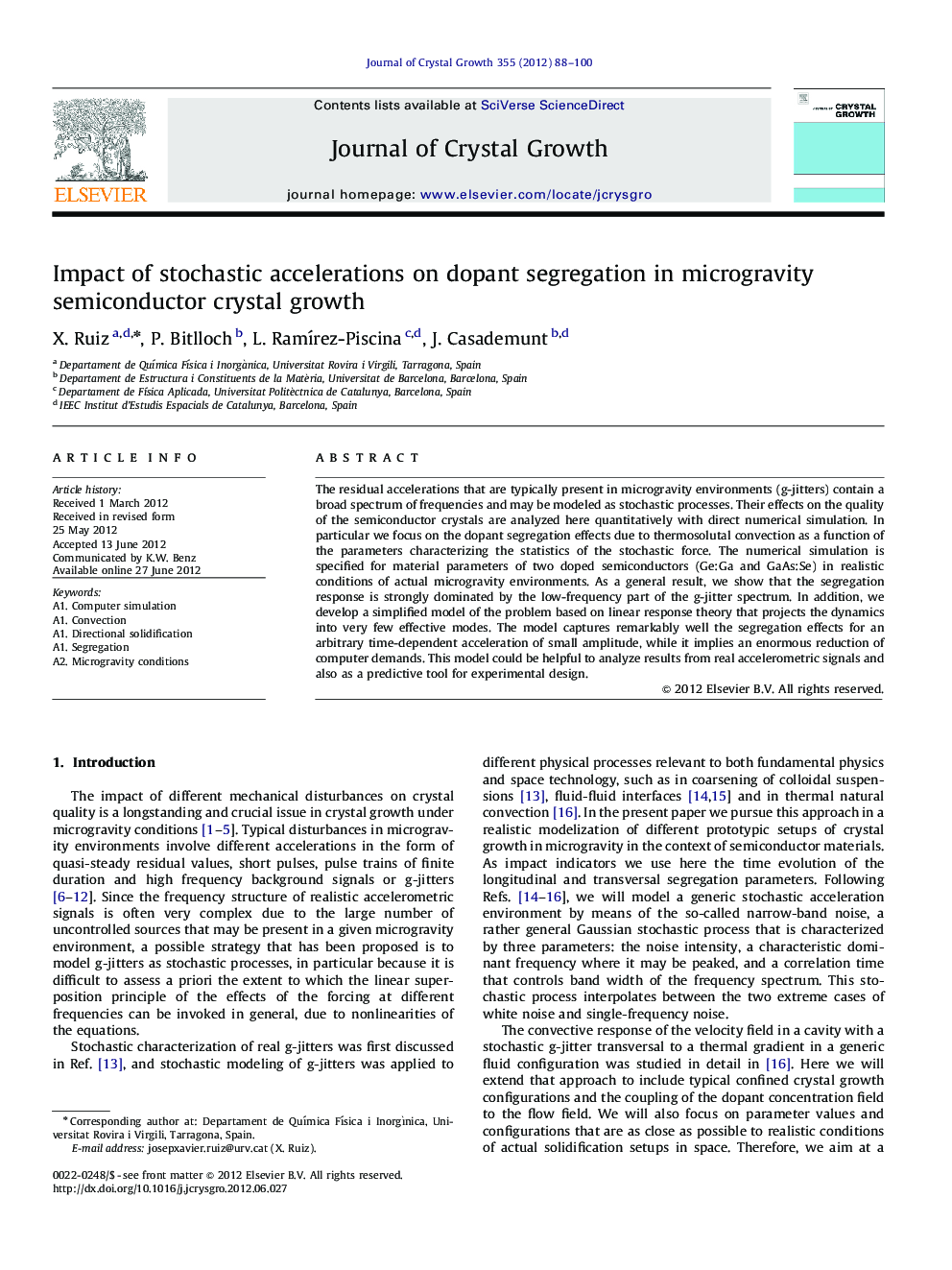| Article ID | Journal | Published Year | Pages | File Type |
|---|---|---|---|---|
| 1791699 | Journal of Crystal Growth | 2012 | 13 Pages |
The residual accelerations that are typically present in microgravity environments (g-jitters) contain a broad spectrum of frequencies and may be modeled as stochastic processes. Their effects on the quality of the semiconductor crystals are analyzed here quantitatively with direct numerical simulation. In particular we focus on the dopant segregation effects due to thermosolutal convection as a function of the parameters characterizing the statistics of the stochastic force. The numerical simulation is specified for material parameters of two doped semiconductors (Ge:Ga and GaAs:Se) in realistic conditions of actual microgravity environments. As a general result, we show that the segregation response is strongly dominated by the low-frequency part of the g-jitter spectrum. In addition, we develop a simplified model of the problem based on linear response theory that projects the dynamics into very few effective modes. The model captures remarkably well the segregation effects for an arbitrary time-dependent acceleration of small amplitude, while it implies an enormous reduction of computer demands. This model could be helpful to analyze results from real accelerometric signals and also as a predictive tool for experimental design.
► We study dopant segregation during directional solidification in microgravity. ► We model g-jitter by a fluctuating gravity signal with given statistical properties. ► We perform extensive simulations for several substances, setups, and g levels. ► We construct a simple model based on linear response theory. ► Effect of arbitrary gravity signals can be obtained with small computational effort.
